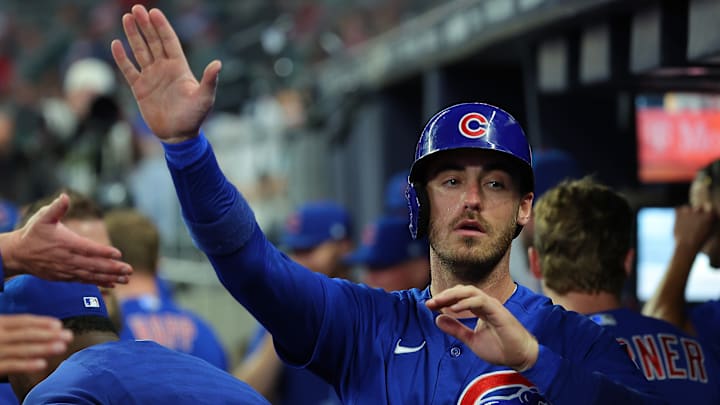Option Three: One-year $30 million dollars
As I said, this version of the deal and the two-year version strike me as the most likely of the three options. In this scenario, Bellinger proves that 2023 wasn’t a fluke and he hits the open market as the top position player available prior to his 30th birthday because he thinks he can get more than $50 million guaranteed.
What it would mean for Bellinger:
This means that he mashes.
We already know he can play defense and this year he proves it by playing center field when PCA needs a day off but plays a majority of the time at first base where he likely wins another Gold Glove. He puts together another season where he hits .300 and joins the 20/20 club for homers and stolen bases.
In this world, the eight-year $200 million dollar deal we posited becomes a possibility and he pocketed another $30 million in 2024 on top of it so it’s a win-win.
What it would mean for the Cubs:
If Bellinger puts together the season listed above and the prospects are as valuable as we all hope they are, this could mean the Cubs win the 2024 World Series. Bellinger seems to love Chicago, so in order for him to walk:
- Someone would need to be offering the deal outlined above and that tends to happen for guys that perform in October
- He’d need to feel like his job in Chicago was done.
If he’s no longer on the books at the $30 million dollar mark it would allow the Cubs to allocate those funds elsewhere going into the 2025 season. If Michael Busch, Matt Mervis, or Haydn McGeary don’t appear to be the answer at first base they could look at Pete Alonso. Or if they have their answer to the first base question they could look to fill the hole in the rotation left by Kyle Hendricks with a star like Corbin Burnes or Gerrit Cole.
I think I speak for everyone when I say if the Cubs entered the 2025 season with a World Series ring and Corbin Burnes rather than Cody Bellinger at $50 million over the next two seasons, we’d all be pretty happy.
